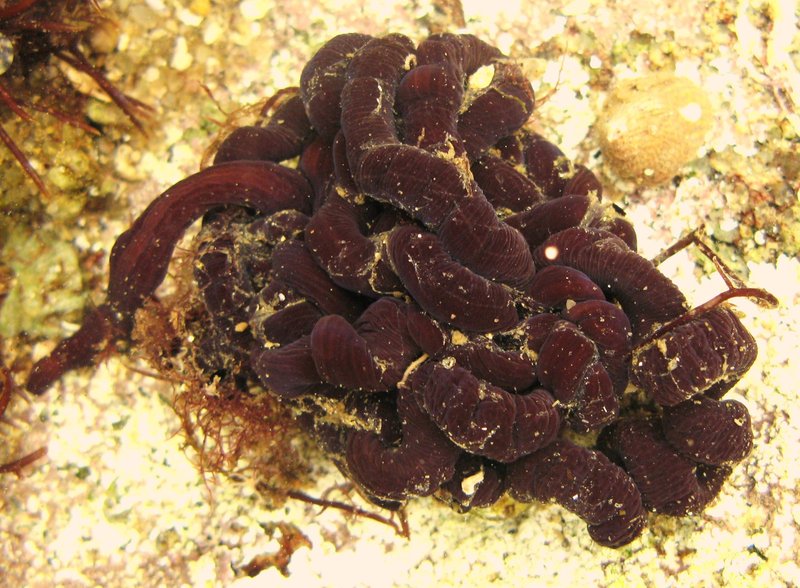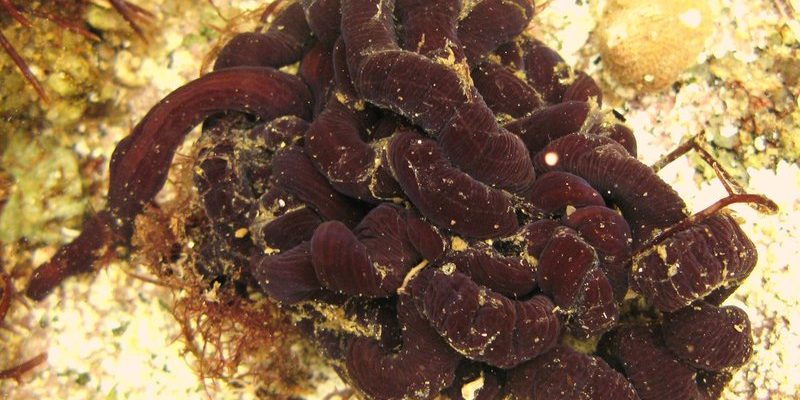
Bootlace worms, or *Lineus longissimus*, are often found in the shallow waters around Europe and are known for their vibrant colors and impressive size. They’re named for their long, thin appearance, resembling a bootlace. If you’re curious about how these wonders of nature manage to stretch so long, or what makes them so special, let’s dive deeper into this incredible world!
What Exactly is a Bootlace Worm?
To really appreciate bootlace worms, it helps to understand what they are. Bootlace worms belong to the *Nemertea* phylum, which is a group of animals known as ribbon worms. These creatures are fascinating not just for their length but also for their incredible adaptability in various marine environments. They primarily live in sandy or muddy substrates, often hiding beneath the surface.
One of the kickers about bootlace worms is their biology. They have a unique body structure that allows them to extend and retract as needed. They can also regenerate lost body parts, which adds to their mystique. Imagine being able to grow a new tail or arm if you lost one—that’s the kind of regeneration we’re talking about!
Additionally, they have a specialized feeding mechanism called a proboscis. This is like a long tube that extends out to capture prey, mostly small crustaceans. Picture a snake’s tongue flicking out to catch a fly, but instead, it’s this beautiful worm reaching out for its next meal.
The Record-Setting Lengths of Bootlace Worms
When it comes to record lengths, bootlace worms steal the show. The longest bootlace worm ever recorded reached an astounding 55 meters (that’s about 180 feet)! To put that in perspective, that’s longer than a blue whale, the largest animal on the planet. Most people wouldn’t even think of a worm being that long, but here’s the thing—bootlace worms are stretchable wonders.
So how do they grow to such lengths? It turns out, their remarkable ability to thrive in their environments, combined with their unique biology, allows them to keep growing. They can live for many years, which means they have plenty of time to stretch out.
In comparison, the average earthworm might only grow a foot or two long in its lifetime. When you think about it, this giant worm seems to exist in a whole different class of its own.
Why Do Bootlace Worms Matter?
You might wonder why we should care about these long worms. Bootlace worms are vital members of the marine ecosystem. They play an important role in the food web, serving as both predators and prey. By consuming small organisms and being eaten by larger ones, they help maintain the balance of life beneath the waves.
Furthermore, their unique biology has caught the attention of scientists. Researchers study these worms to better understand their regenerative abilities and what that could mean for medical science. Imagine if we could learn how to regenerate tissue or even organs from studying a bootlace worm! These insights could be groundbreaking for treating injuries or illnesses in humans.
Let’s not forget about their role in marine habitats. Bootlace worms contribute to the overall health of their ecosystems by oxygenating the sediment as they burrow and feeding on organic matter. So, next time you think of the ocean, remember that even the longest bootlace worm is doing its part to keep things running smoothly.
Where Can You Find Bootlace Worms?
If you ever find yourself near the coast of Europe, you might just stumble upon these incredible creatures! Bootlace worms are commonly found in the North Atlantic, particularly around Britain and the coasts of Scandinavia. They prefer sandy or muddy sea beds, where they can hide and hunt for prey.
During low tide, it’s possible to spot them if you know where to look. Just remember, they’re great at blending in with their surroundings, so you’ll need a keen eye! Local marine biologists and enthusiasts often go on beach walks or tidal pool explorations to discover such unique marine life.
In aquariums or marine research centers, you can sometimes see these long worms displayed, giving you a chance to witness their awe-inspiring length up close.
Myths and Misunderstandings About Bootlace Worms
Like any fascinating creature, bootlace worms are surrounded by their fair share of myths. One common misconception is that they are dangerous. While it’s true that their colors and lengths might look intimidating, bootlace worms are generally harmless to humans. They don’t pose any threat unless you’re a small fish in their diet!
Another myth is that all long worms are bootlace worms. Actually, many types of worms can grow quite long, but not all share the same characteristics or habitats. Different species have different adaptations that help them thrive, so while they may look similar at a glance, they can vary quite a bit.
Understanding these myths helps paint a clearer picture of bootlace worms and shows us just how diverse the animal kingdom can be. Just as with many creatures, there’s often more beneath the surface (quite literally!).
Bootlace worms may be simple creatures at first glance, but they offer so much more than what meets the eye. From their record-setting lengths to their vital roles in the ecosystem, these long worms are truly remarkable. Next time you think about the ocean and its inhabitants, consider giving a nod to the bootlace worm—a creature that stretches the boundaries of what we know about marine life.
In exploring their habitats, biology, and the misconceptions surrounding them, we gain a deeper appreciation for these unique beings. Let their story remind us of the wonders that exist in our world, often hidden beneath the waves. After all, every corner of nature has its own tale to tell, and the bootlace worm is no exception!

